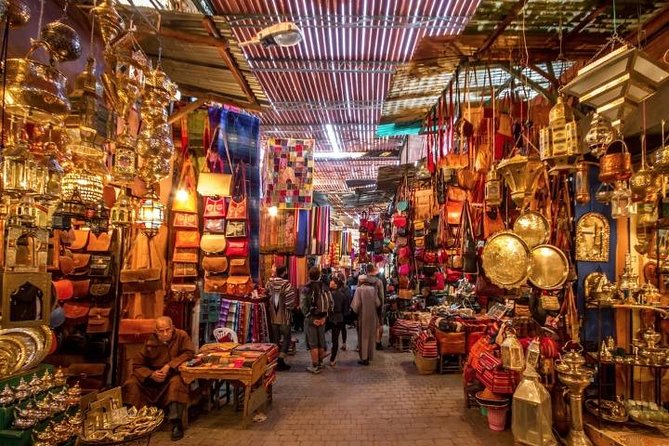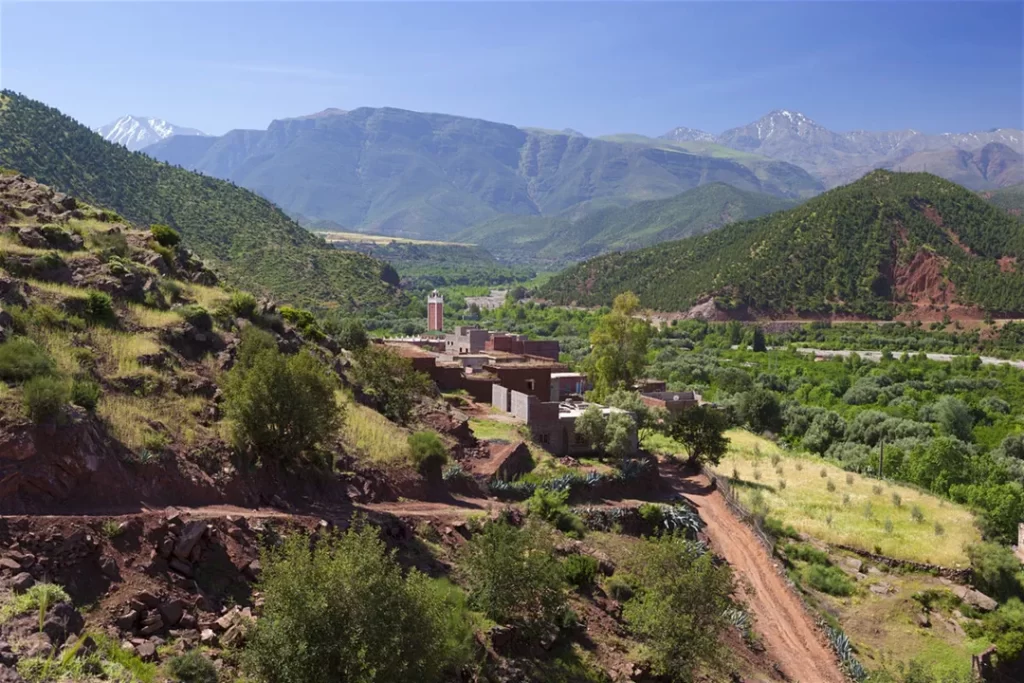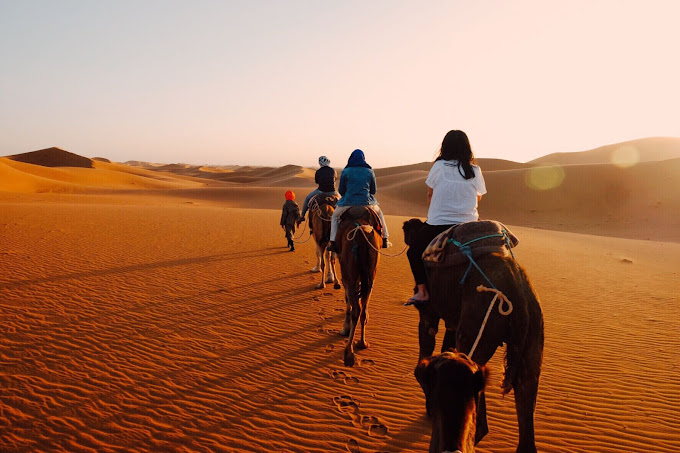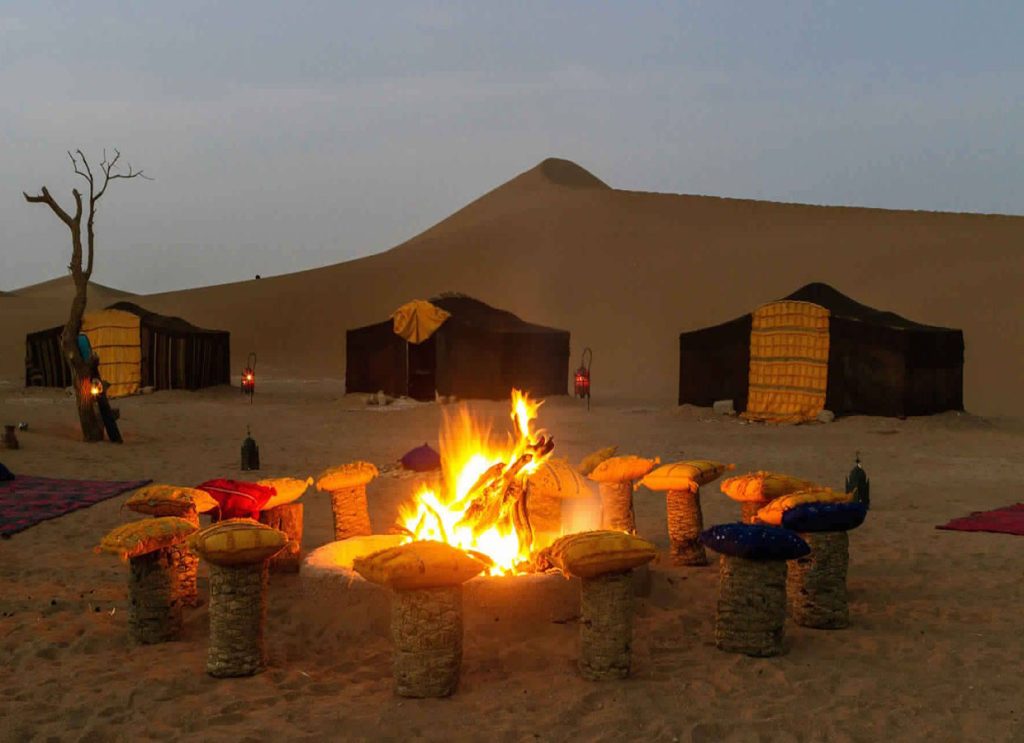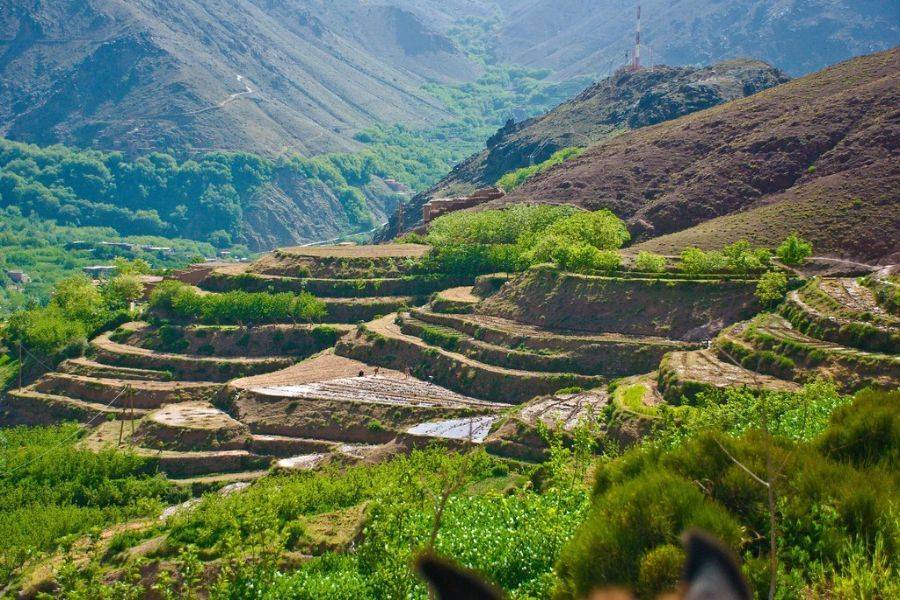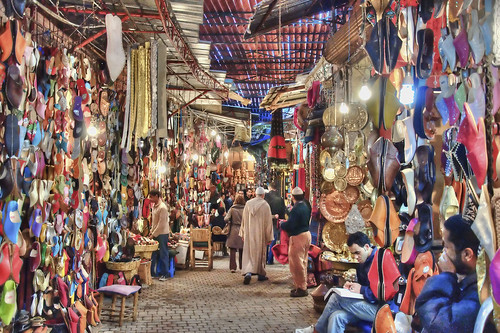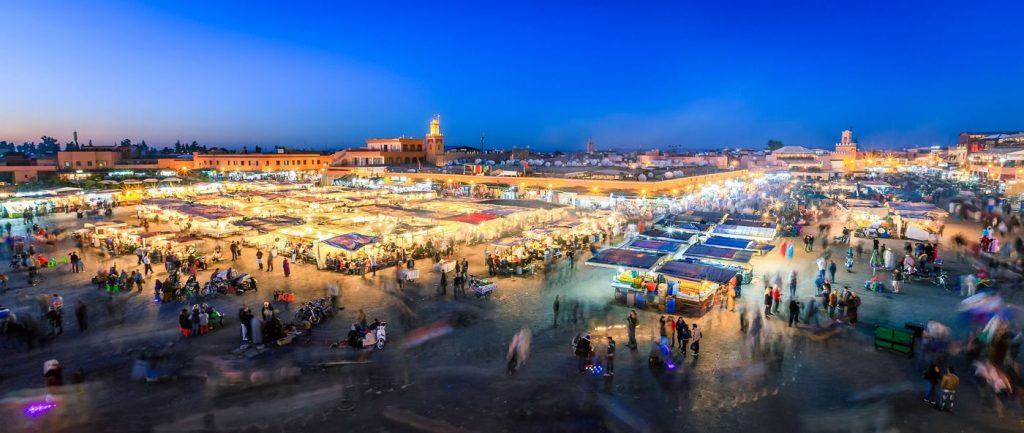Overview
Most of our Camel Treks begin and end in M’Hamid, at the edge of the desert, so you will need to make your own way there and back. However if you prefer, Ultimate Morocco Tours can organize your transport—please let us know at the time you make your booking.
We provide camels for riding and/or carrying your luggage, bags for luggage, kitchen equipment, sleeping tents and gear, and food. For lunches there are, for example, salads or vegetables accompanied by eggs, barbeque or spaghetti. For dinner, there is always soup followed by tajines, couscous or other meals and fresh fruit.
Because of extreme heat, these tours are not offered during the high summer months of July through August.
Itinerary
We will pick you up from your hotel or riad in Marrakech to begin this magical journey. We traverse
the High Atlas Mountains via the Tizi n’Tichka Pass, the highest main road in Morocco, and continue
through typical Berber villages and lush valleys filled with palm trees and gardens. Beyond
Ouarzazate, we cross the Anti-Atlas mountain range before joining the course of the Dra’a Valley,
following the longest river in Morocco, flanked by lush date palm oases and crumbling kasbahs. We
drive via Agdz and Zagora and spend the night in a camp on the edge of the Sahara.
After breakfast, you will meet your desert guides and the camels will be loaded with your luggage
and equipment. Your guides will help you wrap your turban, a necessary headgear for protection in
the desert. The morning trek follows the southern banks of the Dra’a River through the original
settlement of M’Hamid, where the palm trees provide welcome shade. When we exit the palm
groves, we’ll stop for lunch in Ras Nkha. After lunch, we continue southwest for approximately 2.5
hours towards the marabout (the shrine of a holy man) of Sidi Naji. In the nearby sand dunes, we set
up camp for the night.
After breakfast, we set out for the remote sand dune region of Erg Ezzahar, which we’ll reach before
lunch. Today, the trekking terrain is mostly flat, plateau-like earth (a dried lake) that gradually
transforms into rolling sand dunes. We set up camp at the foot of the high dunes, between smaller
dunes where we have lunch. This is a little-visited dune region, and you are free to spend the
afternoon exploring this vast area, climbing the highest point at sunset to enjoy the expansive views
across the ‘erg’ (sand sea). We spend the night under the bright stars.
After breakfast, we cross the astonishingly wide bed of the Dra’a River and trek to the abandoned
desert settlement of Erg Smar, where up to 35 families once lived and farmed. Your day’s trek ends in
the welcome shade of the large tamarisk trees where we set up camp. Given the size of these trees,
it’s hard to believe you are still in the heart of the desert. After lunch, you are free to explore the
settlement, the banks of the Dra’a, and the sand dunes.
After breakfast, camp is struck. Today’s goal is the dunes of Bougaran, where we might come across
other visitors for the first time on the trek. From Erg Smar, you leave the dense vegetation behind to
cross small dunes and then an earth plateau, passing through an area where you might see gazelle
trails. After lunch under the shade of some trees, we continue through the vegetation and sand to
reach a plateau and the rolling dunes of Bougaran, where we camp for the night.
After breakfast, today’s trek leads us through varied landscapes—an area where water has left many
traces, a separate area between the hamada (desert valleys of rocks), and the rolling sand dunes. We
stop for lunch in the shade of the tamarisk trees, then continue over flat land that was once fertile.
At times, when there has been rain, it is still possible to see people farming even now. We set up an
overnight camp in the small sand dunes of Erg Bertam.
We set off after breakfast with the village of M’Hamid as our goal. The terrain once more becomes
marked by little dunes, and as soon as we cross the river, the palm groves appear. We stop for lunch
before reaching the village, where you spend the night in a camp or a hotel.
In the early morning, we depart from M’Hamid and drive north back to Marrakech, retracing the
route followed on Day 1. We stop for lunch and photos, and if you wish, you can visit some
cooperatives for souvenirs. We expect to arrive in Marrakech by late afternoon. We suggest that you
book into a riad or hotel in Marrakech for the night. We can assist if you wish.
Includes
- Pick-up and drop-off before and after trek
- Meals as indicated in trek details
- Accommodation as indicated in trek details
- Tours/activities as indicated in trek details
- Transport by 4 x 4 or minibus
Excludes
- International & domestic flights
- Travel insurance (highly recommended)
- Visas if required
- Drinks or beverages, unless indicated in trek details
- Tips and gratuities to guides and drivers


